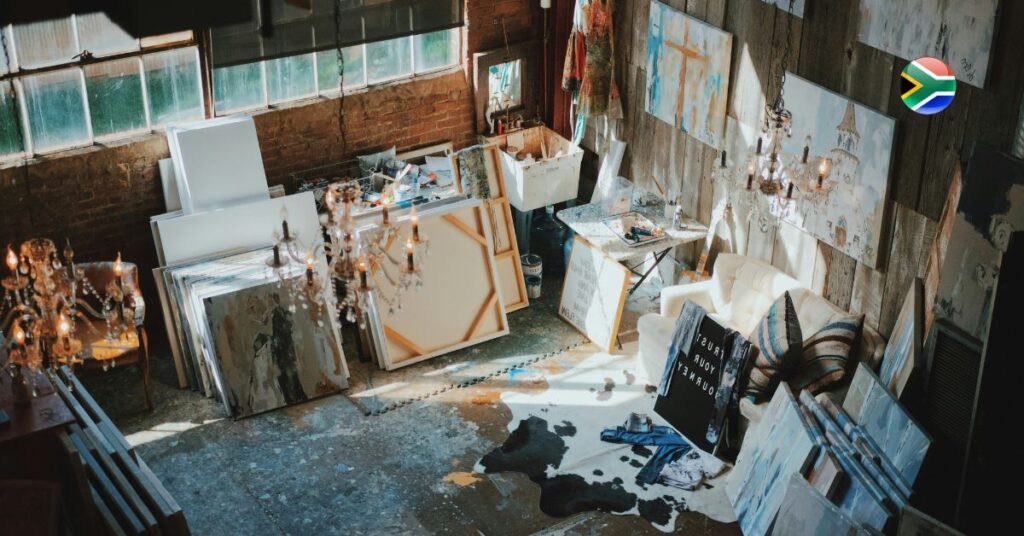South Africa has long been a hub of creativity and artistic expression, boasting a rich history of visual arts that capture the country’s diverse cultures, landscapes, and social dynamics. From the works of early indigenous peoples to the contemporary pieces that grace international galleries today, South African artwork has made an indelible mark on the global art scene.
Exchange control rules and South African artwork
In recent decades, the global demand for South African art has grown exponentially. Collectors, galleries, and museums around the world are increasingly drawn to the rich textures, themes, and narratives portrayed in the works of South African artists. From traditional African motifs to contemporary political and social commentary, South African art presents a unique fusion of past and present, attracting international buyers who see both aesthetic and investment value in the pieces.
With the growing global interest in South African art, many collectors, museums, and art dealers in South Africa seek to acquire pieces that are representative of the country’s artistic history. However, when it comes to the export of artwork that is older than 50 years, stringent regulations are in place to protect these cultural treasures.
Export regulations for South African artwork older than 50 years
Exporting any artwork that is over 50 years old requires a special permit from the South African Heritage Resources Agency (SAHRA). Without this permit, it is illegal to remove the artwork from South Africa. The process involves a detailed application in which the artwork’s historical, cultural, and artistic significance is assessed. This process helps SAHRA determine whether the piece can be safely exported without compromising the country’s cultural legacy.
Navigating the Export Process
For art dealers in South Africa, collectors, and galleries, the process of exporting artwork that is older than 50 years requires careful compliance with SAHRA’s regulations. In practice, this means:
- Application for an Export Permit – The individual or institution intending to export the artwork must submit an application to SAHRA detailing the piece’s history, age, and significance.
- Assessment by SAHRA – SAHRA will assess the artwork to determine its cultural, historical, and aesthetic value. This may involve consultation with experts in the field of South African art to ensure that the proper decision is made.
- Approval or Denial – Based on the evaluation, SAHRA will either grant or deny the export permit. If approved, the artwork may be exported under specific conditions. If denied, the piece must remain within South Africa.
The export permit process is stringent for a good reason—many artworks, especially those by iconic South African artists like Pierneef, Irma Stern, and Gerard Sekoto, are considered national treasures.
Navigating the exchange control rules
For South Africans planning to leave the South African shores on a permanent basis it is not merely an act to insure and load your South African paintings into a container. Under South African exchange control rules, the export of artwork is subject to specific guidelines.
The export of artwork is categorised as forming part of the export of an individual’s household and personal effects. This means that when an individual leaves South Africa, the artwork they own personally can be exported under the same rules that apply to other personal belongings. Currently, this limit is R1 000 000. A SARS Customs Declaration must be obtained in all instances where an individual wishes to export household goods and personal effects.
If the total value of household and personal effects, including artwork, exceeds R1 million, an Application of International Transfer tax clearance certificate from the South African Revenue Service (SARS) must be obtained.
For the export of artwork valued above R10 million, an Application of International Transfer tax clearance certificate from SARS must be obtained and a formal exchange control application must be submitted to the Financial Surveillance Department of the South African Reserve Bank (FinSurv). A valuation certificate will have to be obtained to verify the value of the artwork. FiSurv will evaluate an exchange control application of this nature on a case-by-case basis.
Treatment of artwork for tax purposes
Artwork is treated as a personal-use asset for tax purposes in terms of the Eighth Schedule to the Income Tax Act 58 of 1962 and is therefore exempt from capital gains tax (CGT), if the artwork is owned by an individual. However, if the artwork is owned by a trust or a company, such entity will not be exempt from CGT. Exporting South African artwork, particularly pieces older than 50 years, requires careful navigation of both the heritage and exchange control rules and regulations.
FinGlobal: Cross-border financial services experts for South African expats
FinGlobal is here to help you confidently manage your international financial affairs. Contact us today for expert guidance and support for your cross-border financial and South African Exchange Control needs!
Send us a message
Leave your details below including a short message and a financial consultant will contact you.
Licensed South African Financial Services Provider FSP # 42872
You have Successfully Subscribed!
FinGlobal Newsletter Subscription
Subscribe to the FinGlobal newsletter to receive all the latest news and information regarding our services and South African Expats.
